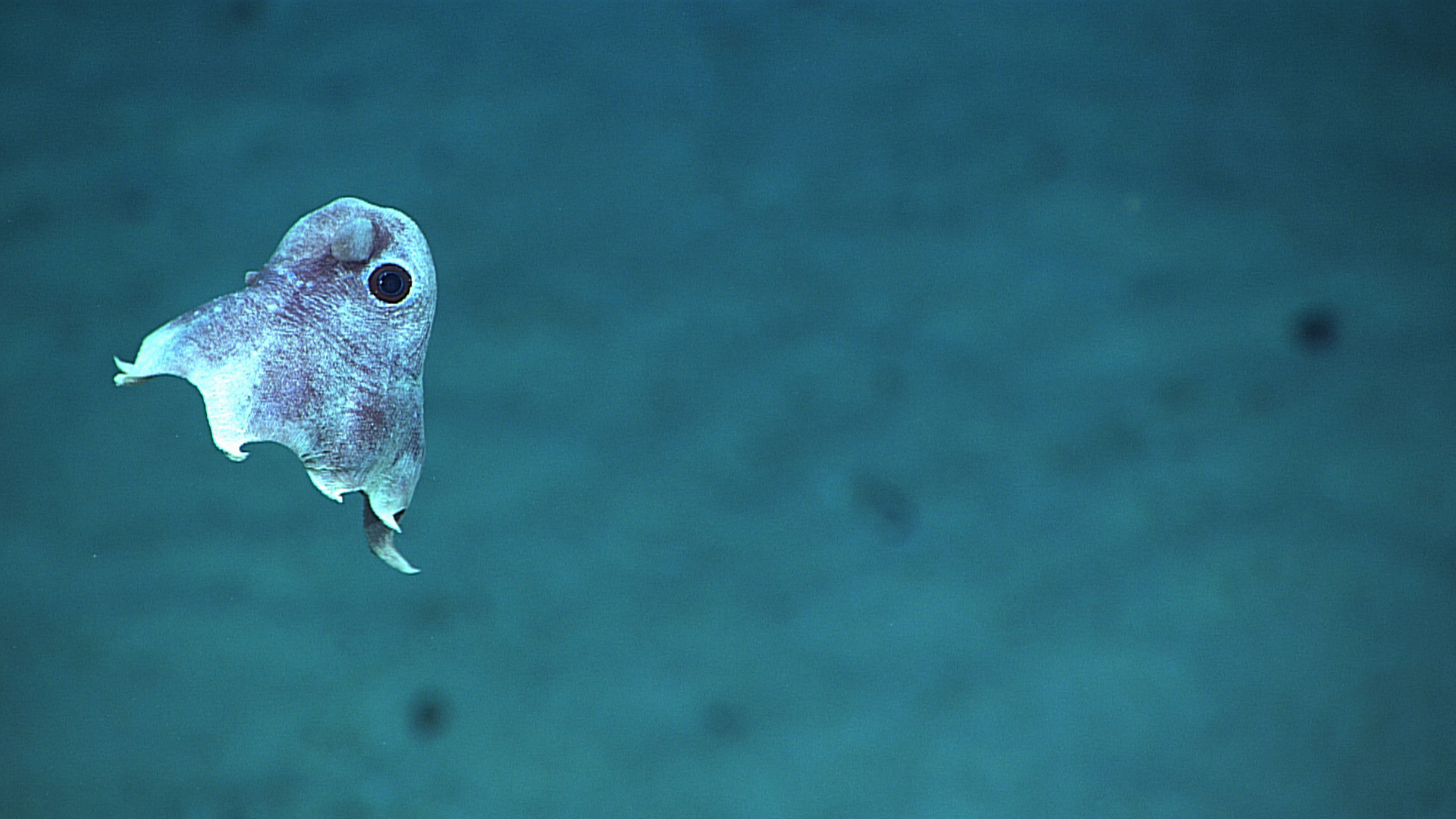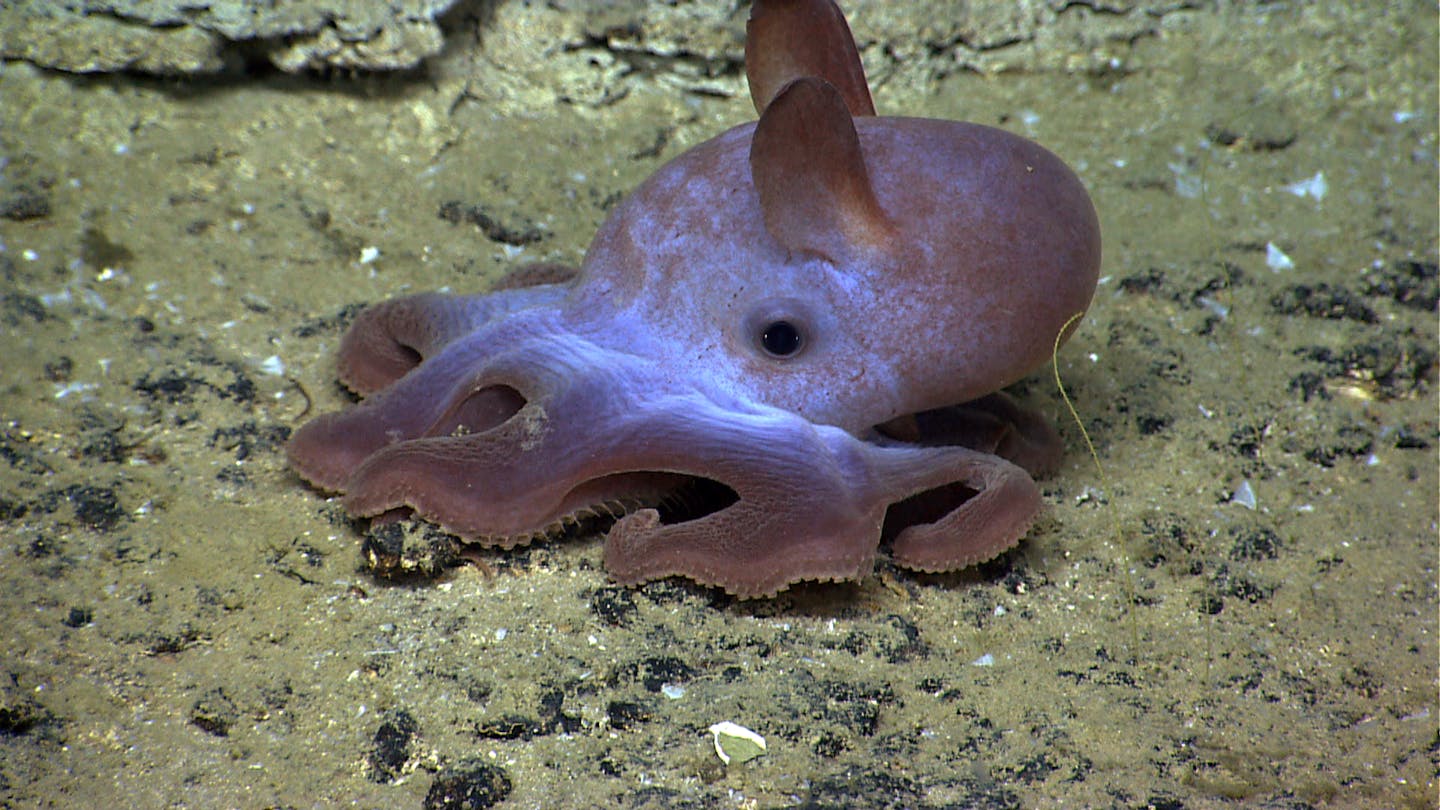Fun facts about the fantastic deep sea dumbo octopus
Each Wednesday, One Earth’s “Species of the Week” series highlights a relatively unknown and fascinating species to showcase the beauty, diversity, and remarkable characteristics of our shared planet Earth.
You may be surprised to find that Grimpoteuthis is the name of neither a Muppet nor a Disney character. Rather, it’s a genus of pelagic umbrella octopuses known as the dumbo octopuses. With features as adorable as its name suggests, the dumbo octopus is small, compared to other octopods, at only an average 20-30 cm - slightly larger than an adult guinea pig. It propels itself through the water and navigates currents with specialized flippers on top of its head that look just like ears - hence the moniker, Dumbo, after the fictitious elephant that used its ears to fly.
Grimpoteuthis’s other unusual traits are adaptations to life in the cold, pressurized depths of the ocean. There are 13 recognized species of umbrella octopuses, which exhibit a variety of shapes and colors and have the ability to “flush” or camouflage themselves to their environment. Unlike most octopuses, the Dumbo octopus doesn’t have an ink sac because it rarely encounters predators in the deep sea.

A tiny dumbo octopus, whose body measured about five centimeters across. NOAA.
As the ocean depths and seafloor remain largely unexplored, dumbo octopuses are a rare sight for researchers, and are largely unaffected by human activity. But that doesn’t mean they don’t have worries: since they live in such deep water, prey are almost as scarce as predators. They forage for their food, eating pelagic invertebrates that swim above the sea floor, like polychaete worms, pelagic copepods, isopods, amphipods, and other crustaceans for food. When they find something to eat, they swallow it whole.
Since dumbo octopuses are naturally rare, they’ve developed behaviors that increase their chances of successfully reproducing anytime they can find a mate. Females always carry eggs in different stages of development, and are able to store the sperm packets handed off to them by males for long periods of time. That way, they can transfer sperm to their most developed eggs any time the environmental conditions are right for reproducing. They lay their eggs on the bottom of the sea floor, attached to rocks or other hard surfaces. The young octopuses are large when they are born and must survive on their own immediately. A dumbo octopus typically lives only around 3 to 5 years, making them inviable as pets, or as captive animals - in addition to the fact that they cannot survive outside of the highly pressurized waters of the deep sea: that’s why you’ll never find one in an aquarium or a pet store.

.png?auto=compress%2Cformat&w=200)

